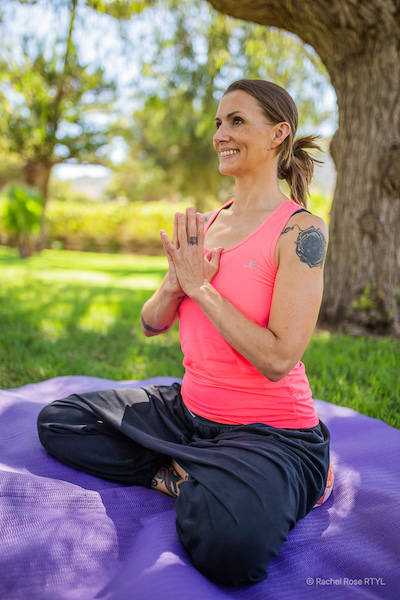Table of Contents
Good sleep habits have been shown to increase life expectancy by up to five years. A study that will be presented next month has thrown up some startling new data. Over 172,000 adults of an average age of 50 years were tracked for five years. Their sleep habits were recorded and correlated with death rates and causes of death.
“Participants were followed for a median of 4.3 years during which time 8,681 individuals died. Of these deaths, 2,610 deaths (30%) were from cardiovascular disease, 2,052 (24%) were from cancer, and 4,019 (46%) were due to other causes.“
The 5 good sleep habits

The five factors of good quality sleep are:
- ideal sleep duration of seven to eight hours a night
- difficulty falling asleep no more than two times a week
- trouble staying asleep no more than two times a week
- not using any sleep medication
- feeling well-rested after waking up at least five days a week.
Those study participants who reported that they slept 7-8 hours per night, had difficulty falling asleep or staying asleep less than twice per week, used no sleep medication, and awoke feeling rested most days lived, on average 2-5 years longer than the study participants who did not fulfill all these criteria.
Bear in mind, these good sleep habits are self-reported. So, they are subjective.
What happens when we sleep
We spend about a third of our lives sleeping, but science, as yet, is not fully able to explain the whys and wherefores of sleep. Still, we know that there are certain good sleep habits that we must get right, most of the time.
What we do know is that humans seem to need about 7-8 hours of sleep, in nighttime hours, preferably at the same time, every night.
Deep breathing
When we think of someone sleeping, we usually imagine a person lying down and breathing deeply. In fact, for a breathwork instructor like me, sleeping breath is endlessly fascinating. Countless people are assailed by snoring and sleep apnea at night, But, the healthy sleeping breath is slow, deep and rhythmic, with a sound not unlike that of waves upon a seashore. Good sleep habits, for me, include breathing through the nose and not snoring.
Cerebrospinal Fluid (CFS)
This slow, deep rhythmic breath seems to help “wash” the brain by stimulating the flow of cerebrospinal fluid, or CFS. (There is even one study that confirms that yogic breathing techniques also stimulate CFS flow in the brain).
Lymph
Deep breathing also stimulates lymphatic flow. This is due to the pumping of the diaphragm and the resulting push-pull in the ventral (abdominal) space. Lymphatic flow is vital for immunity, so it stands to reason that the deep breathing of good sleep helps immunity. Also, just lying down takes the pressure off our lovely lymphatic system. What more reason do you need??
How to sleep better at night naturally
Habits for better sleep include keeping regular hours, not eating heavy meals late at night, using alcohol moderately, and practicing yoga, breathwork, and meditation. Yoga has been shown to help people sleep better. Massage also promotes better sleep quality. It would almost seem that my whole professional offer is about better sleep! Well, not quite. But, I am a former insomniac and I can tell you that I now sleep better and longer than ever before.
Good sleep habits for insomnia include not lying in bed for too long if you do awaken at night, not drinking too much water before bed, taking Magnesium and/or GABA (not if you’re on anti-depressants), and making sure that your bed linen is not too heavy or too light. If you are prone to waking with racing thoughts, keep a book and a pen next to your bed so that you can jot down whatever it is that you’re thinking and, hopefully, get back to sleep.
Your sleep hygiene checklist
If you need a little help to get some rest, do try to limit screen time before bed, avoid energetic exercise, avoid spicy food and caffeine after midday, practice deep breathing and conscious relaxation, take time to hug and caress your loved ones, and spend some time looking at the moon, the stars, or even a pretty plant. In short, tune into yourself and tune the world out!
Conclusion
Rose Tint Your Life is a conceptual project on how to make life a little more fun, just by tweaking normal everyday habits. I hope to offer insight into research and theory on longevity and anti-aging. I always work from the basis of Spirituality with my feet on the ground.
Sleep is cheap, natural, and normal. We all do it, but some people truly struggle to sleep well and enough. If you are interested in using natural methods like yoga, breathing, and massage to help you to sleep better, get in touch with me via my Whatsapp button or my contact form.
If your head is what is spinning, meditation and mindfulness might help, too. I teach both in private and online sessions. I think you’re worth investing in. Do you?
Good sleep habits, if not learned in childhood, can be developed in adulthood. Learning good sleep habits is fundamental for good health and for longevity. Not only does sleep allow the body to rest and the spirit to dream, but it also lets the CFS and the lymph flow. So what are you waiting for? Get to bed!
Sending good vibes from here,
Rachel



